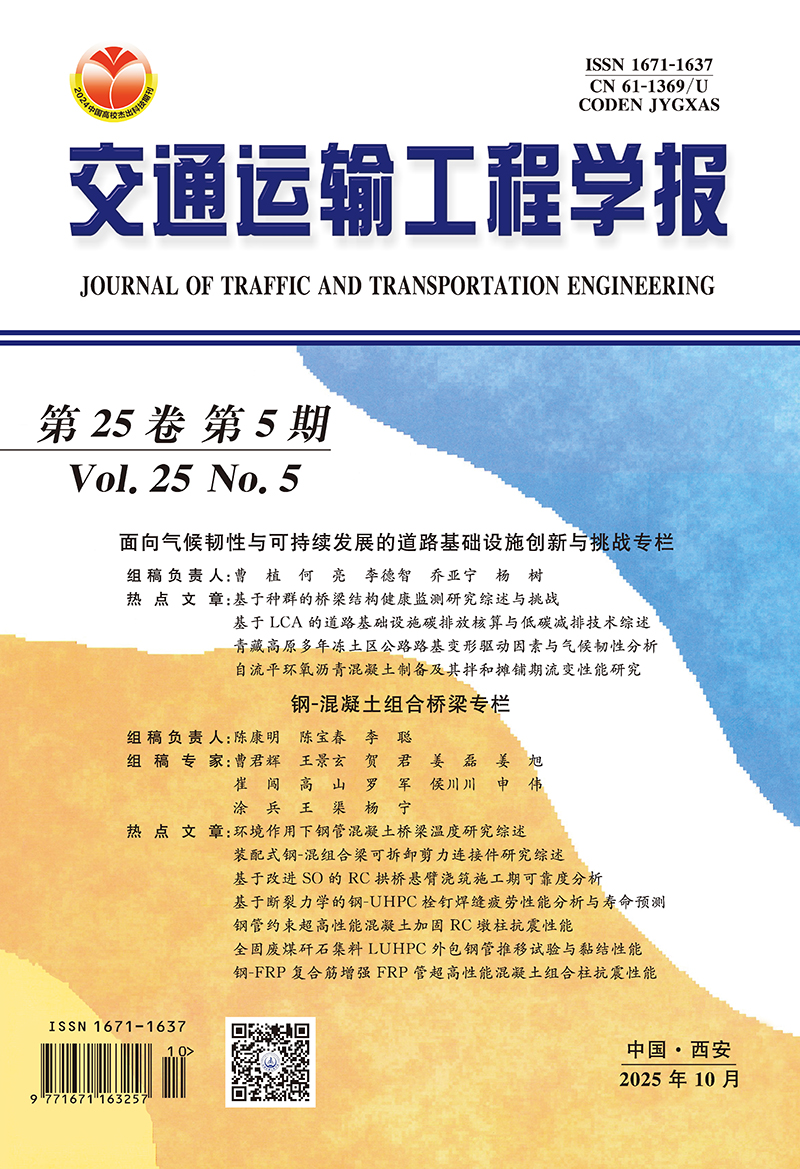2009 Vol. 9, No. 2
Display Method:
Service level evaluation of signalized intersection based on trapezoid whitenization weight function
Abstract:
2009, 9(2): 121-126.
doi: 10.19818/j.cnki.1671-1637.2009.02.022





